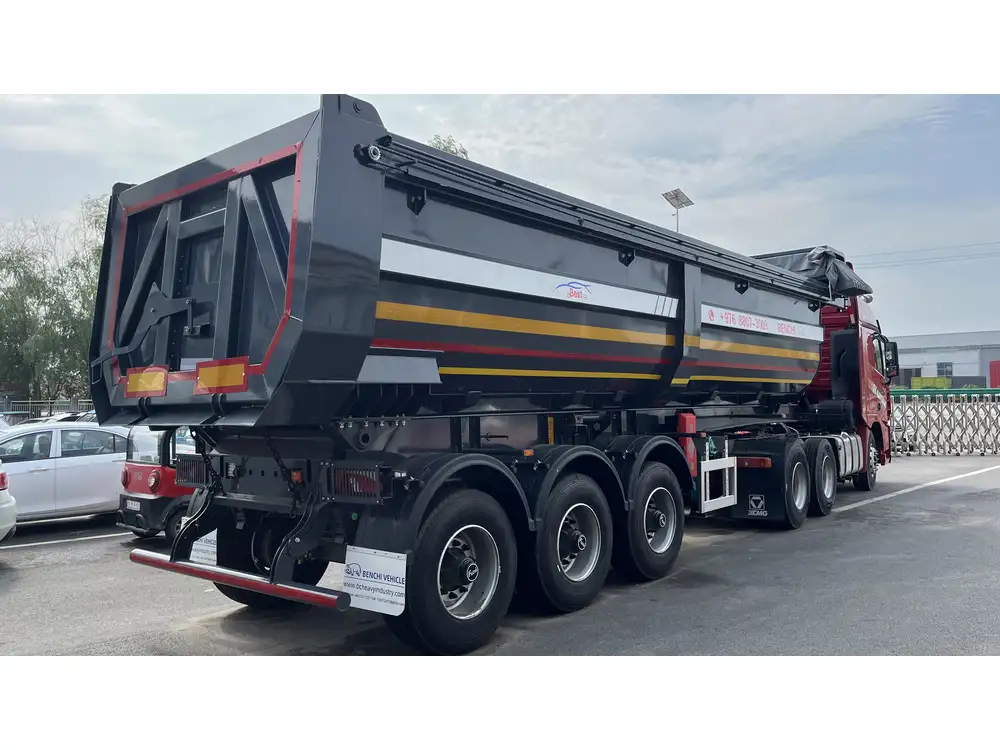When it comes to logistics and transportation, understanding the dimensions of semi truck trailers is crucial for businesses, drivers, and fleet managers. The size of a semi truck trailer not only dictates what can be transported but also influences adherence to regulatory requirements, load stability, and even fuel efficiency. In this article, we dissect the dimensions of semi truck trailers, analyze their importance in the transportation industry, and provide insights for optimizing operations.
What is a Semi Truck Trailer?
A semi truck trailer is a non-motorized vehicle designed for transporting goods. It connects to the tractor unit (the truck itself) via a fifth wheel coupling, allowing for flexible movement. Trailers come in various forms and sizes, each tailored for specific transportation needs, from carrying standard pallets to specialized cargo.
| Trailer Type | Length | Width | Height | Common Usage |
|---|---|---|---|---|
| Dry Van | 48-53 ft | 8.5 ft | 9.5 ft | General freight, non-perishable goods |
| Flatbed | 48-53 ft | 8.5 ft | Varies | Heavy machinery, construction materials |
| Refrigerated | 48-53 ft | 8.5 ft | 9.5 ft | Perishable goods like food |
| Tanker | 40-60 ft | Varies | Varies | Liquids such as fuel and chemicals |
| Car Carrier | 40-53 ft | 8.5 ft | 12.5 ft | Transporting vehicles |
Importance of Trailer Size in Transportation
Choosing the correct trailer size has significant implications for the logistics process, impacting everything from cargo capacity to regulatory compliance.
Payload Capacity: Different trailer sizes support varying payload capacities. An oversized load might lead to fines, while an undersized trailer can cause inefficiencies and increased costs.
Regulatory Compliance: Different states and countries have specific regulations regarding size limits. Being well-informed about trailer dimensions helps avoid legal issues related to transportation.
Fuel Efficiency: The size and weight of a trailer directly affect fuel consumption. Optimizing trailer size can lead to significant savings over time.
Loading and Unloading Efficiency: Suitable trailer dimensions facilitate better loading and unloading processes, reducing turnaround times.

Standard Semi Truck Trailer Sizes
Here, we delve deeper into conventional trailer dimensions to give you a clearer perspective.
1. Length
The length of a semi truck trailer can vary widely. However, the most common sizes are 48 feet and 53 feet.
48-Foot Trailers: These are typically used for transporting basic commodities and can hold up to 26 standard pallets. They are often favored for shorter hauls due to their versatility.
53-Foot Trailers: These trailers provide increased capacity, accommodating up to 30 pallets. Common in long-haul operations, they allow for enhanced efficiency when transporting bulk loads.
2. Width
The standard width for semi truck trailers typically measures 8.5 feet. This measurement is crucial for ensuring compatibility with loading docks and roadways. Some specialized trailers, such as those for transporting equipment, may exceed this width but will require special permits.

3. Height
The height of a semi truck trailer usually ranges from 9 to 13.5 feet, depending on the type of trailer:
Dry Van Trailers: Generally have an interior height ranging from 8 to 9.5 feet, allowing for various stacking configurations for pallets.
Refrigerated Trailers: Similar to dry vans but may have extra insulation, maintaining a slightly higher weight due to cooling mechanisms.
Customized Trailer Options
Beyond standard sizes, many manufacturers offer custom solutions to meet specific transport needs. Custom trailers can be tailored in length, width, height, and even design specifications, such as:
Expanded Dimensions: For specific odd-shaped cargo, modifications may include extending lengths and adjusting heights.
Specialized Designs: Certain industries may require unique modifications such as removable sides or additional compartments.
Assessing Specific Transportation Needs
Determining the right size of a semi truck trailer requires analysis based on the type of cargo, routes, and regulatory standards. Here are some considerations to facilitate this assessment:

1. Cargo Type and Volume
Different cargo types require adaptations. For instance, a refrigeration trailer is essential for perishables, while a flatbed is ideal for heavy machinery. Assess the details by compiling:
Weight: Measure the total weight of the goods, which varies based on the product type.
Volume: Calculate the overall space required in cubic feet or cubic meters, considering stacking potential.
2. Route Regulations
Ensure to research the route’s legal restrictions, as many jurisdictions restrict the dimensions of commercial trucks:
Height Restrictions: City centers may enforce lower clearance limits.
Width and Length Laws: Many regions enforce length restrictions of 48 feet for big rigs; know the laws before planning.
3. Operational Efficiency
Operational characteristics can greatly influence logistics:
Turn Radius: Longer trailers may have difficulty navigating tight turns, possibly restricting delivery locations.
Weight Distribution: Proper load distribution within the trailer is vital for maintaining stability and braking efficiency.

The Future of Semi Truck Trailer Design
In the rapidly evolving trucking industry, innovations in trailer design are aimed at maximizing efficiency and sustainability. Consider the following trends:
Aerodynamic Trailers: Enhanced designs reduce drag and improve fuel efficiency, representing a significant advancement in the industry.
Smart Trailers: Technology integration allows for real-time tracking, predictive maintenance, and load optimization, significantly benefiting fleet management.
Eco-Friendly Materials: Carbon footprint reduction has led manufacturers to explore sustainable materials without compromising durability and strength.
Conclusion
Understanding the full spectrum of semi truck trailer sizes – from the standard dimensions to industry innovations – equips logistics professionals with the knowledge necessary to make informed decisions. Whether determining the right size for specific cargo types or adapting to regulatory obligations, businesses can enhance efficiency, reduce costs, and improve delivery performance through careful trailer selection.
As the trucking industry evolves, remaining informed about size, compliance, and emerging trends will ensure that your operations run smoothly and competitively. Always factor in the unique requirements of your business and industry when choosing semi truck trailer dimensions, and don’t hesitate to consult experts for tailored insights.
With this knowledge, organizations can navigate the complexities of the transportation landscape, ensuring that their logistics processes are both fluid and effective.



